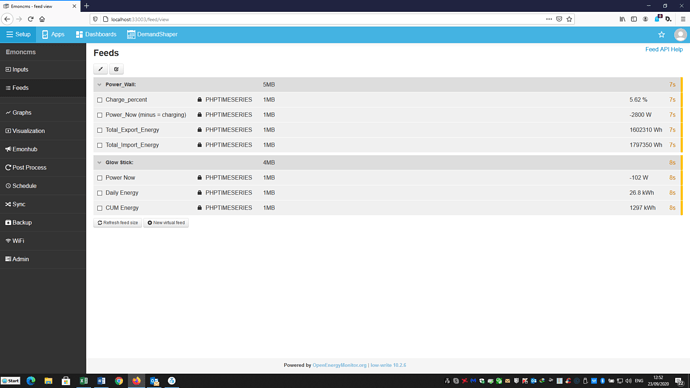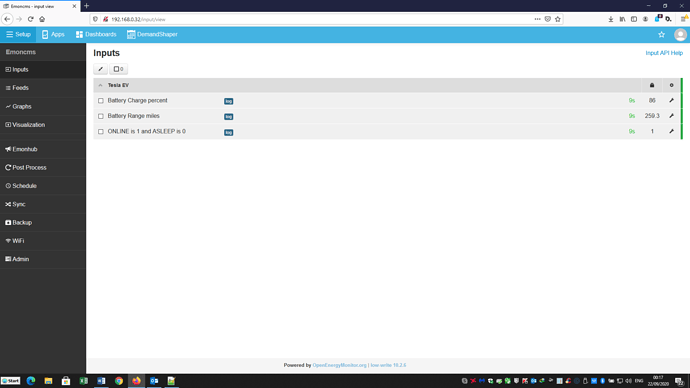I’m involved with a large renewables installation – a domestic residence with 3ph supply and large solar PV installation (30kWp).
Three yrs ago I installed a kit built EmonEVSE charger. It was single phase (all that was then available) and it has not been used intelligently – a bit like an expensive outdoor power socket in effect.
Things have moved on – in the last 3 months, a smart meter has been installed as have PowerWall batteries and a switch made to the Octopus Agile tariff. So now it’s time to be ‘a bit more intelligent’ and I was wondering about the latest EmonEVSE Wi Fi Charger.
My thinking is …
During daylight – the house and PowerWall have first priority call on any solar generation. However there are times when despite this, solar export still occurs. The objective is that, if the EV is parked at home, it should charge from this over & above House + PowerWall need for solar export.
A Hildebrand GlowStick CAD is installed and I now have a script running on emon as a service that inputs real time Smart Meter data to emoncms – see screenshot – the instantaneous import/export power value is in emoncms.
So my daylight question – can the latest EmonEVSE WiFi Charger handle this situation via MQTT and, if so, how? I think this is perhaps related to the ECO mode capability? And I really do not want to get into Node Red or move to Home Assistant given my big commitment to the ‘OEM way’ - a lot of learning plus 4 emonTx’s and numerous CT’s & pulse counters.
During darkness – House + PowerWall and EV Charger are no longer linked by solar generation – so they can perhaps be independently optimised. (PowerWall has a Time-based Control feature to use cheap night rates, for example). Assuming the EV is parked at home, it would be sub-optimal to charge to full at albeit cheap night rates because next day there would be no ‘space’ for any free charge from solar. So best only to charge up to a limit (set by the user) that covers next day’s driving needs (which is independent of whether or not the sun will shine strongly next daylight). I now have a script running on emon as a service that interrogates the Tesla EV mobile App data and inputs it to emoncms. It shows whether or not the Tesla EV is online and the latest (or last time online) battery % charge and battery range – see screenshot.
So my during darkness question – can the latest EmonEVSE WiFi Charger handle this situation via MQTT and, if so, how? I think this is perhaps related to the DemandShaper capability?
However, there will be one problem/disadvantage. When the EV charges at night, the added load will cause PowerWall to discharge at an increased rate – in effect PowerWall would be charging the EV battery thus incurring an additional Round Trip efficiency loss of approx 10%. This seems an unavoidable price to pay.
I would really appreciate yr thoughts on the possibility of using the latest EmonEVSE WiFi Charger in the non-standard way described above.
Thx

